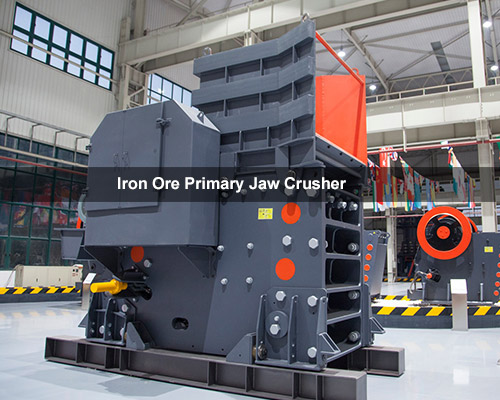What Machinery or Equipment is Used to Extract Iron from Iron Ore?
November 6, 2025
Summary:Professional guide to machinery used in iron ore extraction featuring Liming Heavy Industry's reliable crushing and grinding solutions.
Extracting iron from iron ore is not a single-step process; it is a complex industrial journey that transforms raw, mined rock into the concentrated material needed for steel production. This process, known as beneficiation, relies on a sophisticated flowsheet of heavy-duty machinery. As a leading manufacturer of mining crushers and mineral processing equipment, Liming Heavy Industry provides robust solutions for every stage.
This guide will walk you through the entire process, highlighting the critical equipment required to efficiently extract iron from its ore.
The journey from raw rock to high-grade iron concentrate is typically divided into three main phases:
- Comminution: Crushing and grinding to “liberate” the iron minerals.
- Sizing & Classification: Using screening equipment to separate particles by size.
- Beneficiation: Separating the valuable iron minerals from the waste rock (gangue).
Phase 1: Comminution (Crushing and Grinding)
Before iron can be extracted, it must be freed from the surrounding rock. This liberation process involves progressively reducing the size of the iron ore.

Primary Crushing: The First Impact
The process begins with large boulders directly from the mine, which can be several feet in diameter. A primary stone crusher is needed to handle this coarse material and reduce it to a manageable size (typically 6-10 inches).
- Key Equipment: Liming C6X Jaw Crusher
- Why it’s used: The C6X Jaw Crusher is engineered for the toughest primary crushing applications. Its deep crushing cavity, optimized nip angle, and durable components ensure high throughput and reliability, even with hard, abrasive iron ores like hematite or taconite.
Secondary & Tertiary Crushing: Fining it Down
The output from the primary crusher is still too large for the next stage. Secondary and tertiary crushers further reduce the ore size, preparing it for grinding.
- Key Equipment: Liming HPT Multi-cylinder Hydraulic Cone Crusher
- Why it’s used: A cone crusher is the ideal mining crusher for this stage. The HPT Cone Crusher offers a unique combination of high crushing force, a large feed opening, and automated control. This results in a consistently fine and cubical product, which is optimal for feeding the grinding mills.
Grinding: The Liberation Stage
This is the final stage of comminution. The crushed ore is fed into large rotating drums filled with steel balls or rods. The goal is to grind the ore into a fine powder, the consistency of sand or flour, to ensure all iron mineral particles are physically separated from the gangue.
- Key Equipment: Liming MQ Series Ball Mill
- Why it’s used: A Ball Mill is the workhorse of mineral processing. Our MQ Series Ball Mills are designed for high-capacity, energy-efficient grinding. They can be configured for wet or dry grinding to achieve the precise particle size (mesh) required for effective separation.
Phase 2: Sizing and Classification (Screening)
After crushing and grinding, the material is not uniform. It must be classified to ensure only particles of the correct size proceed to the separation stage. Oversized particles are sent back to the crusher or mill for further reduction.
- Key Equipment: Liming S5X Vibrating Screen
- Why it’s used: Effective screening equipment is crucial for circuit efficiency. The S5X Vibrating Screen uses high vibration intensity to effectively classify materials, preventing undersized particles from being re-crushed and ensuring oversized particles are returned, maximizing the plant’s overall efficiency.
Phase 3: Beneficiation (The “Extraction” Stage)
With the iron liberated and correctly sized, the final step is to separate the valuable iron minerals from the waste. The specific mineral processing equipment used depends on the properties of the iron ore.
Magnetic Separation (For Magnetite Ore)
If the ore is magnetite, the most common and efficient method is magnetic separation. The finely ground ore (slurry) is passed through powerful magnetic separators.
- Key Equipment: Liming CT Series Magnetic Separator
- Why it’s used: The CT Series Magnetic Separator (Drum Separator) features a high-intensity magnetic field. The magnetic iron particles are attracted to the drum and collected, while the non-magnetic gangue (waste) is washed away. This is a highly effective and low-cost method for high-purity iron recovery.
Froth Flotation (For Hematite and Non-Magnetic Ores)
For non-magnetic or weakly magnetic ores like hematite, froth flotation is used. This process uses chemical reagents to make the iron particles water-repellent (hydrophobic). Air is bubbled through the slurry, and the iron particles attach to the bubbles, rising to the surface as a “froth” that can be skimmed off.
- Key Equipment: Liming XCF/KYF Flotation Machine
- Why it’s used: The XCF/KYF Flotation Machine combination provides an efficient flotation circuit. The XCF cell acts as an agitator, ensuring a complete mix of slurry and reagents, while the KYF cell provides excellent aeration and froth collection. This system achieves high recovery rates for fine iron particles.
Conclusion: Your Partner in Iron Ore Processing
Extracting iron from iron ore is a demanding process that requires a complete, integrated system of machinery. From the initial blast-furnace-feed rock to the final high-grade concentrate, every step depends on reliable, efficient equipment.
Liming Heavy Industry is more than just a stone crusher manufacturer. We are a solutions provider for the entire mining and mineral processing flowsheet. Our range of C6X Jaw Crushers, HPT Cone Crushers, MQ Ball Mills, S5X Vibrating Screens, and specialized beneficiation equipment like magnetic separators and flotation cells, are all designed to work together seamlessly. By providing durable machinery, we help our clients maximize recovery rates, minimize operating costs, and achieve success in the competitive iron ore market.
